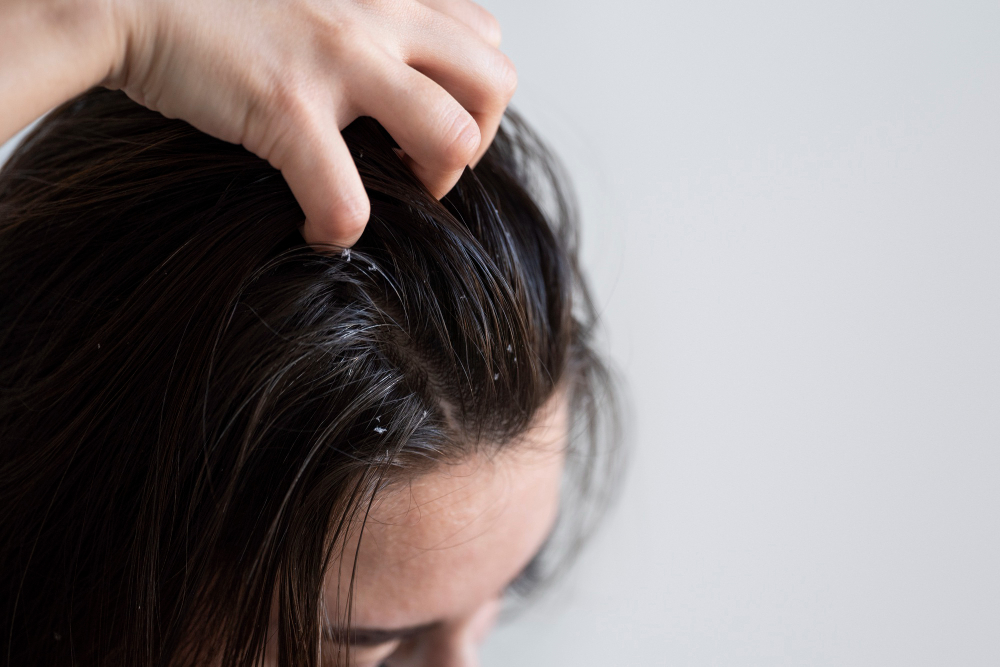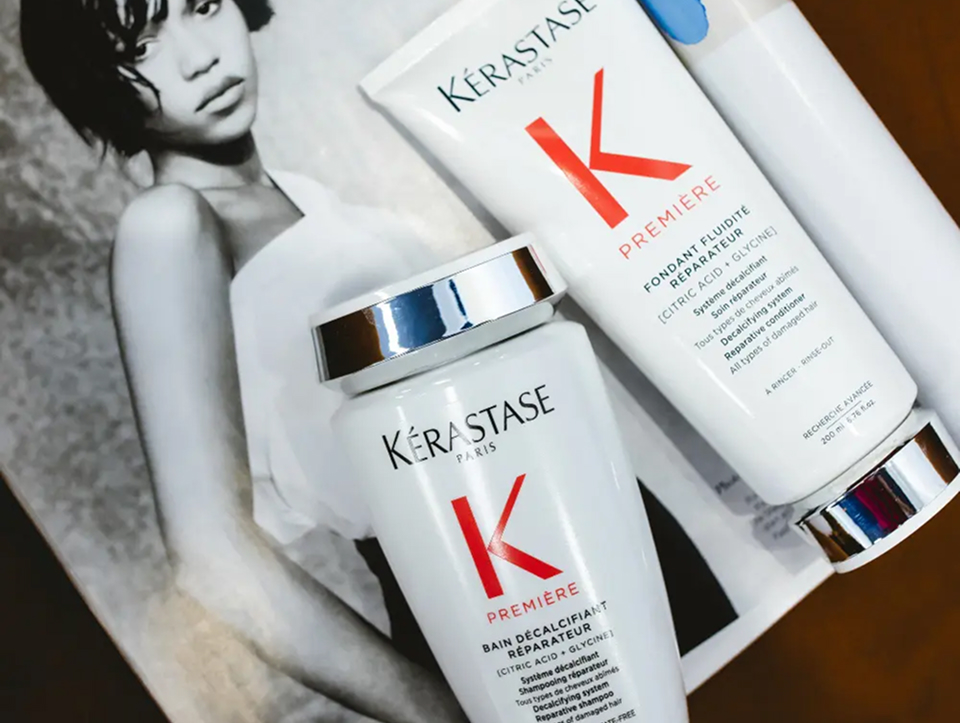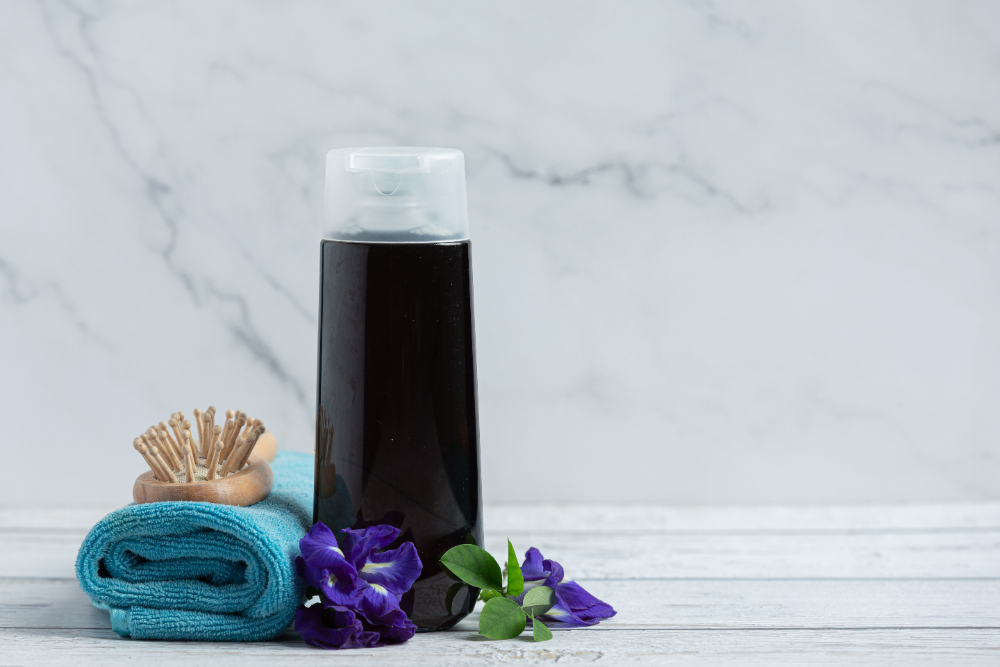Seeing those yellow flakes on the shoulders or a constant itch can make you self-conscious. Dandruff is a common condition affecting most people, and you are not alone.
As a hair wellness spa, we have dealt with a fair share of dandruff, which impacts scalp health and self-esteem. Still, choosing the right dandruff shampoo is even more difficult, given the many options.
With our years of experience in offering the best scalp treatments for dandruff and flakes, we are here to guide you in the right direction.
Understanding What is Dandruff

Dandruff is a common scalp condition characterized by small, white or yellow flakes on the hair or clothing. It results from a yeast fungus called Malassezia that lives on the scalp’s oils.
Often, scalps are itchy, similar to dry scalps, which can lead to infections, redness, or the formation of a yellow scab.
Furthermore, it can be triggered by various factors, including dry skin, overgrowth of the fungus, a sensitive scalp caused by the hair products you use, or a combination of these.
To provide a soothing scalp treatment, we must first determine the cause of the problem.
What Does Dandruff Look Like?
Dandruff often appears as:
- White or yellow flakes
- Oily patches on the scalp
- Red or irritated areas
- Itchy or inflamed spots
These visual signs help distinguish dandruff from product buildup or dry scalp.
Choosing The Right Dandruff Shampoo
When selecting the right dandruff shampoo, consider the following.
Understand Your Scalp
Before you start choosing the right dandruff shampoo, assess your scalp. Look to see if it is dry or oily. Is hair shedding associated with dandruff? You can find the right product once you know your condition and needs.
For instance, when treating dandruff and oily scalps, we use a shampoo with selenium sulfide to help cleanse the scalp. However, if you experience hair loss, choosing one with piroctone olamine added can be beneficial.
Choose The Right Ingredients
An antifungal or keratolytic agent is the key ingredient in dandruff shampoo. Treating your scalp with Octopirox, Climbazole, or Zinc Pyrithione can help reduce Malassezia levels and promote scalp recovery.
A shampoo containing salicylic acid also helps break down dry skin, so a shampoo with antifungals will treat the underlying cause, while keratolytics will address the symptoms. You can combine the two types of agents into a dual-action formulation.
Ensure that the above are present before you buy your anti-dandruff shampoo.
Types of Anti-Dandruff Ingredients
To make choosing easier, here are the common active ingredients and what they target:
- Selenium sulfide – reduces excess oil and slows fungal growth
- Zinc pyrithione – antimicrobial and antifungal
- Piroctone olamine – reduces hair shedding linked to dandruff
- Climbazole – strong antifungal for stubborn flakes
- Salicylic acid – breaks down dead skin buildup on the scalp
Choose One That Cleanses The Scalp
At our hair wellness spa, we ensure that every dandruff and flakes treatment uses a shampoo that lathers well to cleanse the scalp. The shampoo must strip away dirt and particles on the hair. It must also rinse well and not stick to the hair after rinsing.
Select a Dandruff Shampoo For Your Hair Type
With numerous choices available, you must select one that suits your specific hair type. If you have oily hair, we recommend a product that works well for an oily scalp.
For dry hair, you need a shampoo that keeps your scalp hydrated while removing flakes. For more information on treating oily hair and scalp, we recommend reading our article on the topic here.
👉 Did you know you get 13 types of shampoo? Check it out here.
How To Apply Dandruff Shampoo

We recommend following the label instructions for a soothing scalp treatment and dandruff shampoo. It helps to massage the shampoo gently into the scalp. The shampoo frequency can vary, so it’s best to follow the instructions.
For optimal results, we recommend pairing the shampoo with a conditioner and using only lukewarm water. We also recommend checking for any side effects of using your shampoo.
Some side effects are scalp dryness, changes in hair color, or skin irritation. In severe cases of dandruff, we recommend consulting a dermatologist for effective dandruff management.
💡 Also, learn the difference between dandruff and product buildup.
Choosing The Right Dandruff Shampoo
We know dandruff is annoying, but it’s easy to combat flakes and scalp irritation with a dandruff shampoo. Treating dandruff or any other scalp condition begins with a clean scalp, which in turn leads to healthy hair.
Still, if left untreated, it can lead to scalp discomfort and hair loss. Discover a solution with us today and schedule an appointment for the best scalp treatment in Boston to address your dandruff.
FAQ
Can I use dandruff shampoo on my chemically or color-treated hair?
Yes, you can use a dandruff shampoo on your colored or chemically treated hair, as the formula is safe. Still, we recommend constantly checking the label for instructions and looking for one that mentions color safety.
How long does it take before you see results using dandruff shampoo?
The time it takes to use dandruff shampoo varies. Some people experience relief after a few uses, while others can wait weeks. However, it is essential to follow the usage guidelines on the label and, most importantly, be patient.
Can I alternate between the different dandruff shampoos?
While alternating between various dandruff shampoos can help some people, it can have a different effect on your scalp. Your scalp can become accustomed to a specific active ingredient and may improve as a result. However, we recommend being cautious when mixing other ingredients simultaneously.








